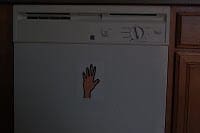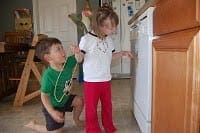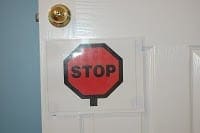Autism is my Interior Designer

Autism is My Interior Designer
I’ve worked with several different interior designers over the past five years. Sadly, David Bromstad from HGTV has never been one.
The first designer I worked closely with was Medical Needs (MN). MN tried to convince me that she could creatively integrate an oxygen compressor, apnea monitor, suction machine, pulse ox, nebulizer, humidifier, IV pole, feeding pump, and tons of little annoying medical supplies into an 800 square foot, one bedroom apartment without losing that homey feel. She promised more than she could deliver.
Baby Proofing was the next designer I consulted. Even though I did not like all of her design choices, I had to agree that a baby gate around the large screen TV and in the fireplace was practical. I give Baby Proofing’s pragmatic design credit for helping me survive two crawlers at the same time. She’d be so proud if she knew the TV gate was permanently removed last summer!
I tried Daycare Chic’s suggestions for a while. Her messy style made her my least favorite. I’ll give DC some credit. Alphabet strips and word window clings did help the kids learn their alphabet and letter sounds. She also did a much better job staying within our budget than Baby Proofing ever could.
DC’s bright and colorful personality made her fun to work with short term, but we felt that our home was more “her” than us. I decided not to consult Daycare Chic when the kids moved from learning the alphabet to learning numbers. I do miss her flair sometimes.
The interior designer we keep returning to is Autism, or ASD as he likes to be called. He’s kind of quirky and can be difficult to work with. His focus isn’t that great and he has a weird communication style. He’s earned his reputation for not being a team player. Sometimes it takes a while for me to understand his vision but he is effective. I never thought I’d say this, but I kind of dig his work!
ASD guided me when I wanted to convert Clara-Bear’s bedroom into a sensory safe place. When life was too overstimulating, she would go into her bedroom and stare at the quilt pattern. ASD helped find more constructive ways for her to self regulate, like roller coaster beads and an indoor swing.
I haven’t been able to afford all of ASD’s suggestions for the bedroom. He’s impatient for two bean bag chairs and appropriate visual stim. Clara-Bear is still learning self-regulation so those changes will wait until we’re ready. ASD has never been good about keeping his projects in budget.
Some of his style choices don’t really blend with our existing decor. The vibrating infant to toddler rocking chair he picked out is kind of babyish but does help Clara-Bear sit still and focus.
It’s easy for a designer to suggest slip covers in a more adult pattern when he isn’t the one doing the sewing. It’s rare when ASD respects me as the client. Not easy to work with, that’s for sure.
His taste in wall coverings is questionable, but again, effective. The “waiting hand” on the dishwasher does make it clear where Clara-Bear should wait when I open the oven.
I needed convincing for the stop signs on doors so the positive results made me feel bad about holding out. It’s not the first time I’ve caved in to ASD. He wins a lot of our design disagreements.
His most ambitious project to date is also his first outdoor living space design. Clara-Bear’s Sensory Garden will probably take a year to complete. We started Phase 1 last October, and finally started pulling it together this past weekend.
ASD really challenged us with this one, but according to David (as seen on tv), a good designer gets his clients thinking outside the box and taking some design risks. We still need to tweak the tulip, do some touch-up painting, make the ladybug’s eyes spin easier, and add a window box of pinwheels before he will call the first part of his vision complete. ASD is insisting on a caterpillar drum and a PVC pipe xylophone. All the phases of his latest project will keep us busy for a long time.
I’ll be honest – I would love to have had more say when choosing our designers. I thought I was done needing extra design help when ASD approached me. He never would have been my first choice. Frankly, ASD makes me uncomfortable sometimes. Learning to work with ASD is an ongoing process. But when I stop trying to force my point of view upon him, open up my mind, and we work together, the results are beautiful.
This article was reprinted with permission from on able2able… Your Special Needs Resource Directory
You May Also Like
- DIY Sensory Rooms on a Budget!
- Pittsburgh Int’l Airport Unveils the Largest, Most Comprehensive Airport Sensory Space in the World
- Enriching Your Child’s Sensory Environment Within Their Typical Routine
- Biophilic Design Can Benefit People with Special Needs
- Eight Key Design Issues for Special Needs Environmental Design
- What Is the Purpose of Least Restrictive Environment?
- ADVICE NEEDED! Environmental Sensory Issues And How You Can Help Better Them
- Inclusive Bathrooms: Let’s Start Talking About It
- Cool Sensory Tools for School
- Do It Yourself Calming Bottle














